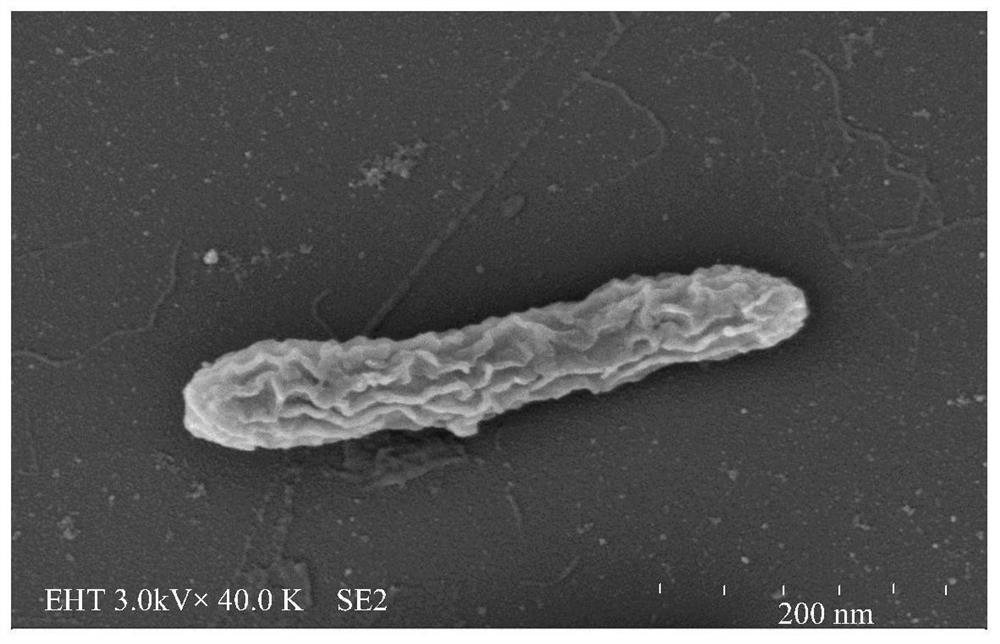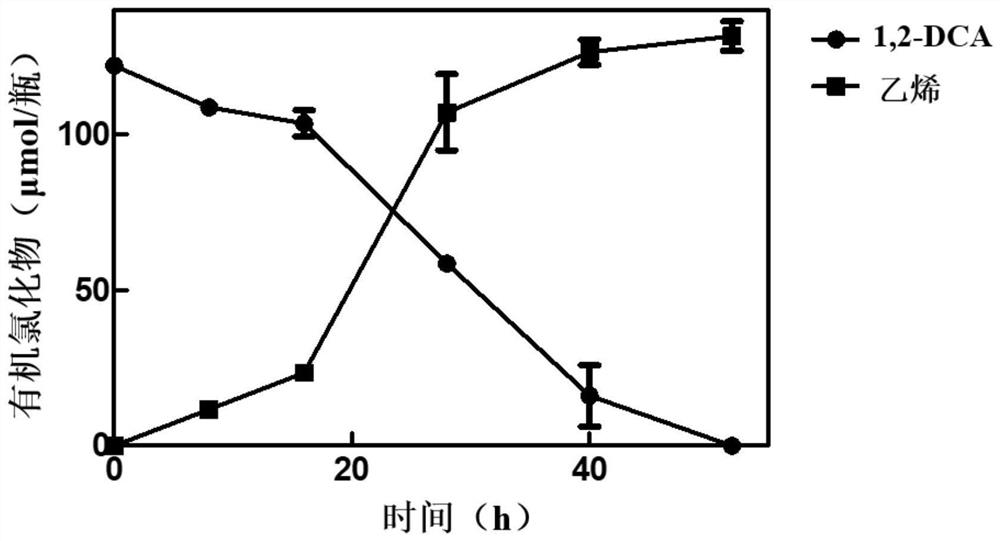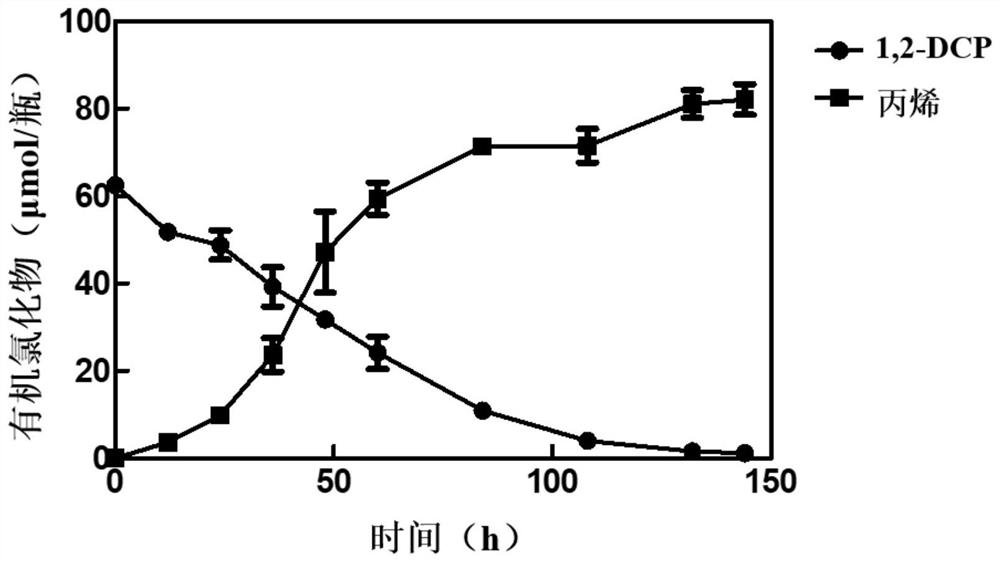Novel organic halide respiration geobacter and application thereof
An organic halogen and geological technology, applied in the field of microorganisms, can solve the problems of unreported and non-degradable organic chlorine of chlorinated alkanes
- Summary
- Abstract
- Description
- Claims
- Application Information
AI Technical Summary
Problems solved by technology
Method used
Image
Examples
Embodiment 1
[0027] Embodiment 1: Isolation, purification and identification of bacterial strains
[0028] (1) Configure the basic medium:
[0029] The composition of the anaerobic inorganic salt medium is: NaCl 1.0g / L, MgCl 2 ·6H 2 O 0.5g / L, KH 2 PO 4 0.2g / L, NH 4 Cl 0.3g / L, KCl 0.3g / L, CaCl 2 2H 2 O 0.015g / L, FeCl 2 4H 2 O 1.5mg / L, CoCl 2 ·6H 2 O190μg / L, MnCl 2 4H 2 O 100μg / L, ZnCl 2 70μg / L, H 3 BO 3 6μg / L, Na 2 MoO 4 2H 2 O 36μg / L, NiCl 2 ·6H 2 O 24μg / L, CuCl 2 2H 2 O 2μg / L, Na 2 SeO 3 ·5H 2 O 6 μg / L, Na 2 WO 4 2H 2 O 8μg / L, resazurin indicator 0.025% (w / v), L-cysteine 24mg / L, Na 2 S·9H 2 O48mg / L, dithiothreitol 77mg / L, NaHCO 32.52g / L (30mM), sodium acetate 0.41g / L (5mM), adjust the pH to 7.2-7.3. After autoclaving at 121°C, add multivitamins 15 minutes later, the final concentration of various vitamins in the medium is as follows: biotin 20μg / L, folic acid 20μg / L, pyridoxine hydrochloride 100μg / L, riboflavin 50μg / L, thiamine 50μg / L, pantothenic acid...
Embodiment 2
[0037] Example 2: Degradation performance identification of strain IAE to 1,2-DCA
[0038] Add 5mM sodium acetate to the anaerobic inorganic salt basal medium described in the above 100ml step (1). Sodium acetate is used as a carbon source and electron donor, and 10 μL (liquid phase concentration 1.23mM) 1,2-DCA is added through a micro-injector As an electron acceptor, 1% (v / v) was inoculated with pure IAE bacteria, and cultured statically at pH 7.2 and 30°C in the dark. 1,2-DCA and its degradation products were determined by gas chromatography (Agilent 7890B) in series with flame ionization detector (FID), loaded with Agilent DB-624 capillary column (60m×0.32mm×1.8μm). The gas chromatographic parameters are as follows: inlet temperature 200°C; heating program: 60°C, hold for 2min; then raise the temperature to 200°C at a rate of 25°C / min, hold for 1min; carrier gas is helium, column flow rate 3mL / min; The temperature of the FID detector is 300°C; the fuel gas is hydrogen, t...
Embodiment 3
[0040] Example 3: Degradation performance identification of strain IAE to 1,2-DCP
[0041] Add 5mM sodium acetate to the anaerobic inorganic salt basal medium described in the above 100ml step (1). Sodium acetate is used as a carbon source and electron donor, and 6 μL (liquid phase concentration: 0.57mM) 1,2-DCP is added through a micro-sampler As an electron acceptor, 1% (v / v) was inoculated with pure IAE bacteria, and cultured statically at pH 7.2 and 30°C in the dark. Quantitative monitoring of 1,2-DCP and its degradation product propylene by the above gas chromatographic conditions (see image 3 ).
[0042] The analysis results showed that the IAE strain could completely degrade 1,2-DCP (liquid phase concentration: 0.57mM) to propylene, and the period was about 144h.
PUM
 Login to View More
Login to View More Abstract
Description
Claims
Application Information
 Login to View More
Login to View More - R&D Engineer
- R&D Manager
- IP Professional
- Industry Leading Data Capabilities
- Powerful AI technology
- Patent DNA Extraction
Browse by: Latest US Patents, China's latest patents, Technical Efficacy Thesaurus, Application Domain, Technology Topic, Popular Technical Reports.
© 2024 PatSnap. All rights reserved.Legal|Privacy policy|Modern Slavery Act Transparency Statement|Sitemap|About US| Contact US: help@patsnap.com










